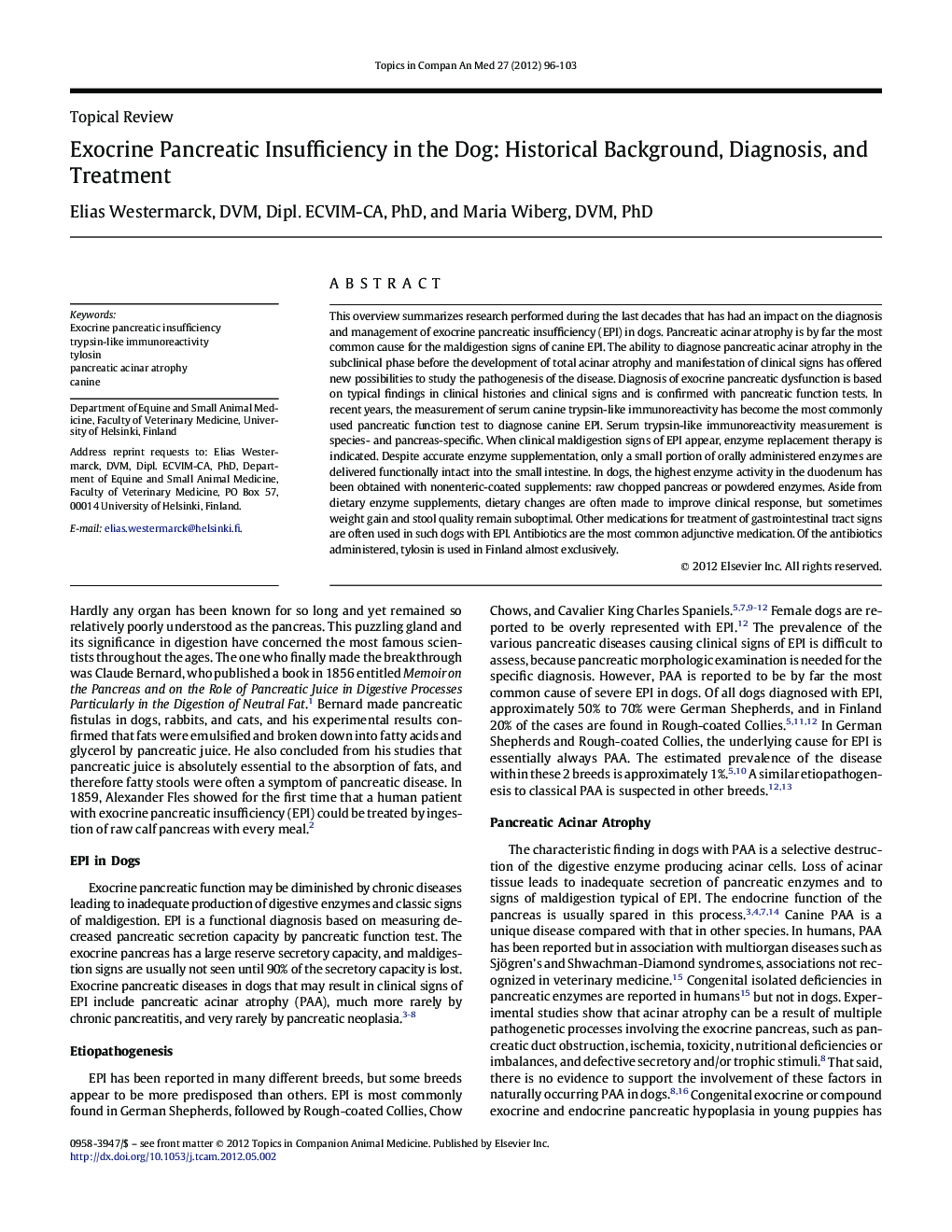| Article ID | Journal | Published Year | Pages | File Type |
|---|---|---|---|---|
| 2401077 | Topics in Companion Animal Medicine | 2012 | 8 Pages |
This overview summarizes research performed during the last decades that has had an impact on the diagnosis and management of exocrine pancreatic insufficiency (EPI) in dogs. Pancreatic acinar atrophy is by far the most common cause for the maldigestion signs of canine EPI. The ability to diagnose pancreatic acinar atrophy in the subclinical phase before the development of total acinar atrophy and manifestation of clinical signs has offered new possibilities to study the pathogenesis of the disease. Diagnosis of exocrine pancreatic dysfunction is based on typical findings in clinical histories and clinical signs and is confirmed with pancreatic function tests. In recent years, the measurement of serum canine trypsin-like immunoreactivity has become the most commonly used pancreatic function test to diagnose canine EPI. Serum trypsin-like immunoreactivity measurement is species- and pancreas-specific. When clinical maldigestion signs of EPI appear, enzyme replacement therapy is indicated. Despite accurate enzyme supplementation, only a small portion of orally administered enzymes are delivered functionally intact into the small intestine. In dogs, the highest enzyme activity in the duodenum has been obtained with nonenteric-coated supplements: raw chopped pancreas or powdered enzymes. Aside from dietary enzyme supplements, dietary changes are often made to improve clinical response, but sometimes weight gain and stool quality remain suboptimal. Other medications for treatment of gastrointestinal tract signs are often used in such dogs with EPI. Antibiotics are the most common adjunctive medication. Of the antibiotics administered, tylosin is used in Finland almost exclusively.
